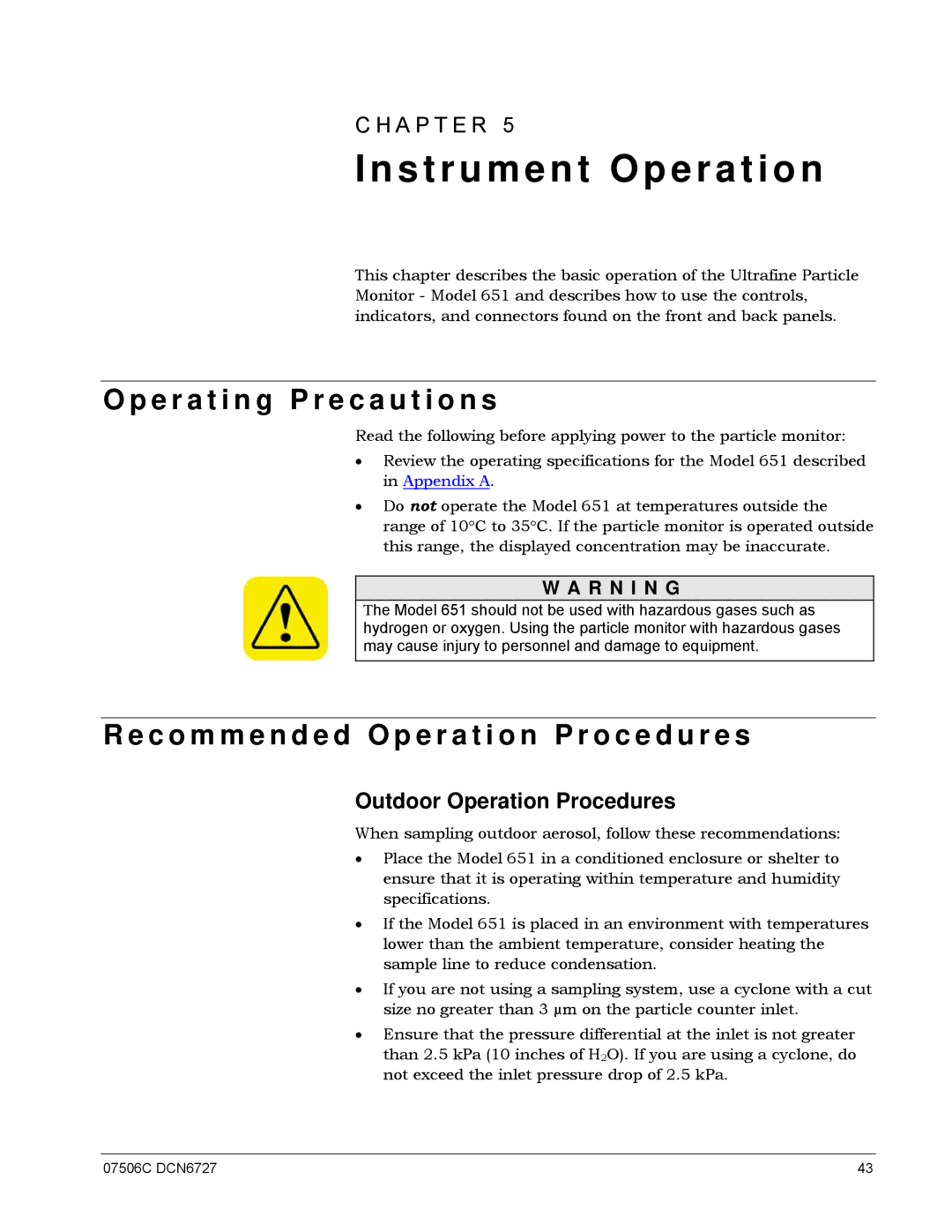
C H A P T E R 5
Instrument Operation
This chapter describes the basic operation of the Ultrafine Particle Monitor - Model 651 and describes how to use the controls, indicators, and connectors found on the front and back panels.
O p e r a t i n g P r e c a u t i o n s
Read the following before applying power to the particle monitor:
∙Review the operating specifications for the Model 651 described in Appendix A.
∙Do not operate the Model 651 at temperatures outside the range of 10°C to 35°C. If the particle monitor is operated outside this range, the displayed concentration may be inaccurate.
W A R N I N G
The Model 651 should not be used with hazardous gases such as hydrogen or oxygen. Using the particle monitor with hazardous gases may cause injury to personnel and damage to equipment.
R e c o m m e n d e d O p e r a t i o n P r o c e d u r e s
Outdoor Operation Procedures
When sampling outdoor aerosol, follow these recommendations:
∙Place the Model 651 in a conditioned enclosure or shelter to ensure that it is operating within temperature and humidity specifications.
∙If the Model 651 is placed in an environment with temperatures lower than the ambient temperature, consider heating the sample line to reduce condensation.
∙If you are not using a sampling system, use a cyclone with a cut size no greater than 3 µm on the particle counter inlet.
∙Ensure that the pressure differential at the inlet is not greater than 2.5 kPa (10 inches of H2O). If you are using a cyclone, do not exceed the inlet pressure drop of 2.5 kPa.
07506C DCN6727 | 43 |
